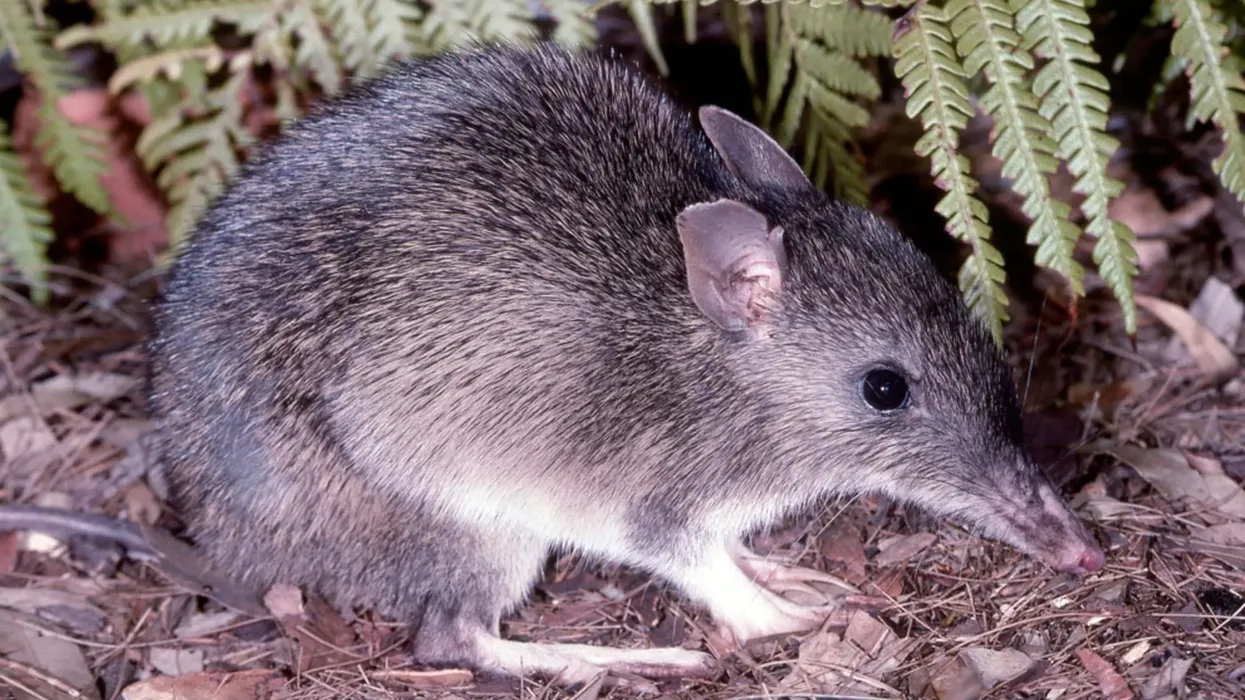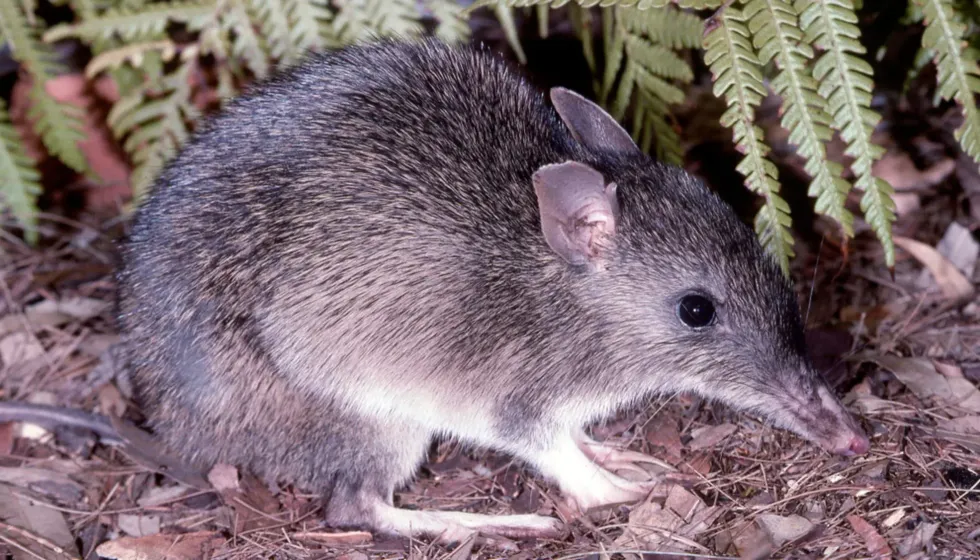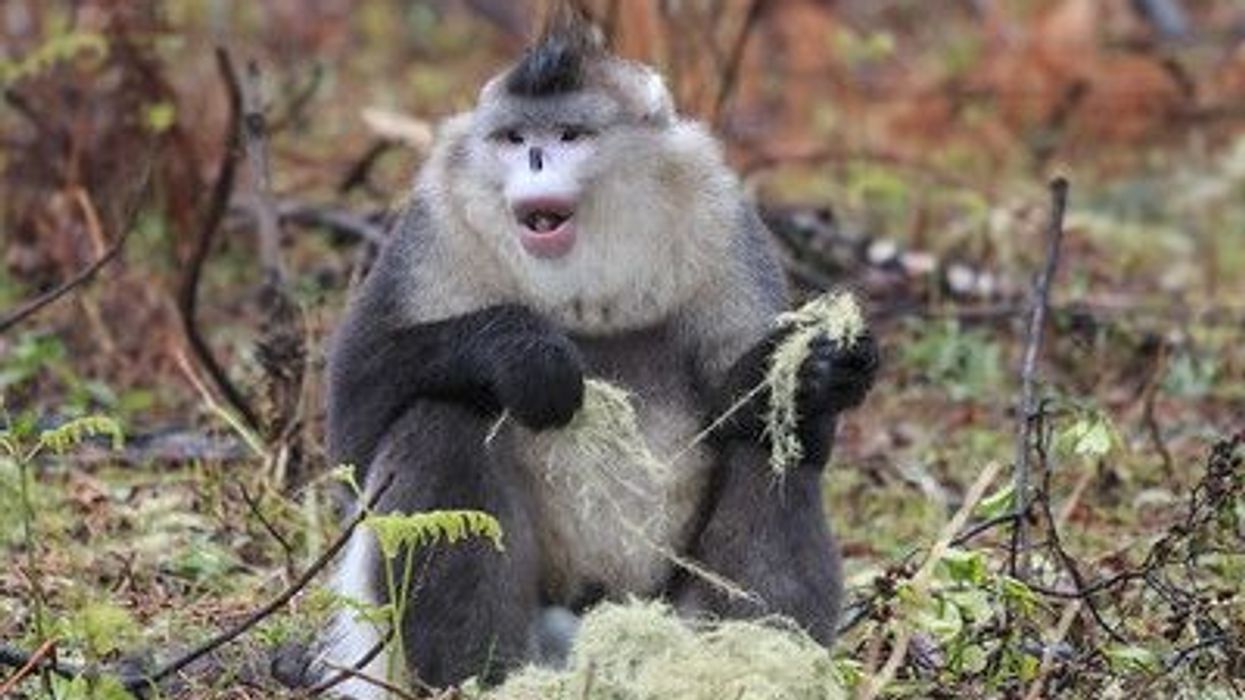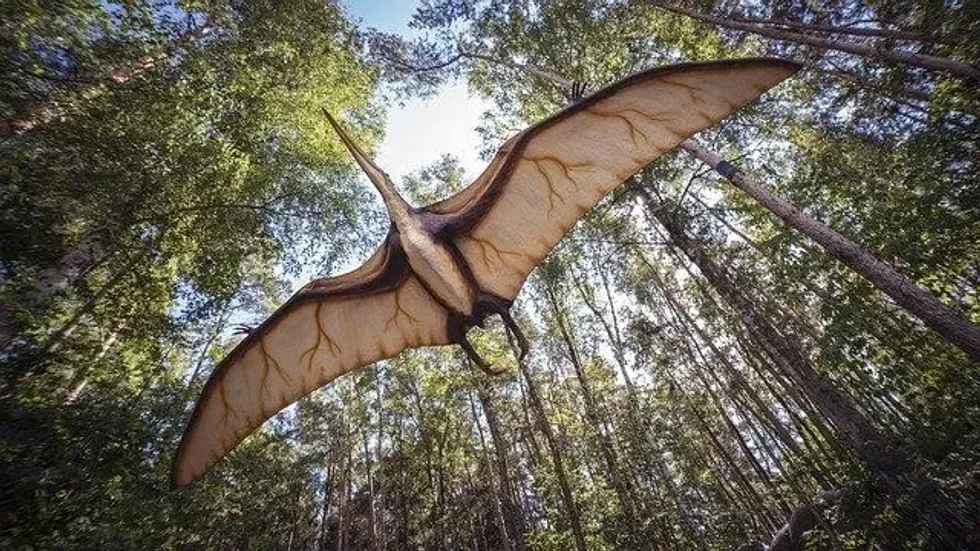The long-nosed bandicoot (Perameles nasuta) is a native bandicoot species of eastern Australia of the Peramelidae family. There are 21 species of bandicoots, and 11 of these are long-nosed bandicoots. Etienne Louis Geoffroy, a French naturalist, described this species in 1804.
In 1825, Heindrich Rudolph Schinz, a Swiss naturalist, described Perameles lawson found near Bathurst in the Blue mountains as new species. Isoodon musei was described by the French naturalist Pierre Boitard in 1841.
Perameles nasuta has two subspecies: nasuta, and pallescens. Pallescens' location range is from central Queensland to the Cape York Peninsula. Nasuta's location range is from western Victoria to East New Southern Wales and north to central Queensland.
This bandicoot is the largest species of this genus. Western barred bandicoot and eastern barred bandicoot are also a part of this genus.
The long-nosed bandicoot is a close relative of the eastern barred bandicoot, and both deviated from each other in the late Pliocene. In the Miocene era, the ancestors of this species diverged from the ancestors of western barred bandicoot. This species is sandy-brown or grayish-colored.
If you find these facts about long-nosed bandicoots interesting, then you need to check these bandicoot facts and Sumatran tiger facts now.
Long-Nosed Bandicoot Interesting Facts
What type of animal is a long-nosed bandicoot?
Perameles nasuta is a bandicoot species of genus Perameles and order Peramelemorphia. The long-nosed bandicoot (Perameles nasuta) is a nocturnal marsupial and omnivorous animal.
They actively forage in the night leaving distinct conical holes and rest in burrows in the day. They often remain in the same area. They avoid predators like cats or dogs by camouflaging in the environment.
What class of animal does a long-nosed bandicoot belong to?
Long-nosed bandicoots (Perameles nasuta) belong to the class Aves of animals and infraclass Marsupialia.
How many long-nosed bandicoots are there in the world?
The data on the population of long-nosed bandicoots (Perameles nasuta) is not available. However, at the North Head, the population is declared endangered and there are around 200-300 of these animals.
Where does a long-nosed bandicoot live?
Long-nosed bandicoots (Perameles nasuta) occupy a habitat range that is along the east coast of Australia that extends from New South Wales and Victoria in the south-east to the Cape York Peninsula in Queensland. These bandicoots are found across the North Head of Wilson's Promontory National Park and south Cooktown.
Since the European settlement, the populations and their distribution in Sydney have been decreased.
What is a long-nosed bandicoot's habitat?
The long-nosed bandicoot (Perameles nasuta) habitat range includes grassy woodlands, rainforest, and moist gullies. They occupy open grassy areas, sheltered areas with undergrowth, swamp, heath, and urban settings.
Who does long-nosed bandicoot live with?
Long-nosed bandicoots (Perameles nasuta) are solitary creatures. They come into contact with each other only during the breeding season.
How long does a long-nosed bandicoot live?
The life span of long-nosed bandicoots (Perameles nasuta) is 5.6 years in captivity. There is no data regarding their life span in the world. In Sydney Harbor National Park study area, the mortality rate of these creatures is 58% which is associated with vehicular collision and more than 35% associated with predation by non-native animals.
How do they reproduce?
The breeding process of the long-nosed bandicoots is observed only in captivity and not in wild. The mating process begins when for a period of few hours the male starts following the female which is then terminated by the process of copulation for less than an hour.
The females mate with one male per breeding season. The females only become sexually active after their young ones are weaned.
The males are present only during the mating process; which leaves the females to provide all the care to the young.
So, the female provides protection, incubation, and fertilization to the offsprings. The average gestation period of this species is 12 days.
After 12.5 days of the gestation period, the young continues to develop in the pouch of the female up to 50-54 days before the weaning stage. The females stop the care just before the young reach maturity around three months.
What is their conservation status?
The conservation status of long-nosed bandicoots is Least Concern. In the '60s this bandicoot species distribution decreased in many regions in Sydney.
They are now restricted to Ku-ring-gai Chase National Park, north shore, blue mountains, Holsworthy, and Royal National Park. The population in Sydney North Head is classified as endangered and their population number is around 200. The Taronga Zoo in Sydney has taken up a breeding program to improve the populations of these animals.
The bandicoot species have adapted to forage in urban settings. The clearing of forest for industries and farming make it difficult for these animals to hide from their predators increasing the risk of extinction.
Long-Nosed Bandicoot Fun Facts
What does a long-nosed bandicoot look like?

The long-nosed bandicoots are solitary native Australian animals. They are marsupial with grey-brown to reddish-brown fur. These are non-climbing and nocturnal animals.
Their body length is about 16 in (40 cm) which includes the tail of 5.5 in (14 cm). They have a long nose (snout) and upright pointed ears. They have a short tail, a hunched back, and a rear-facing pouch. The three clawed toes on the front feet.
They produce a high-pitched sound when disturbed. The female skull length is less than the male skull length. This animal has 48 teeth.
How cute are they?
Long-nosed bandicoots are small brown marsupials with a long nose and short tail. So, they are considered cute.
How do they communicate?
There is very little data on the long-nosed bandicoot's communication process. Most times they use vocalization, visualization, or chemicals to communicate. They are observed to produce high pitched screech when they feel threatened or irritated.
How big is a long-nosed bandicoot?
The length range of these marsupials is 20 in (51 cm). The male bandicoot is larger than the female.
How fast can a long-nosed bandicoot run?
Bandicoots can run fast. The exact data on the speed of long-nosed bandicoot is not available. The average speed of a bandicoot is 15 mph (24.14 kph).
How much does a long-nosed bandicoot weigh?
The average weight of this bandicoot is between 1.5-1.9 lb (681-862g). Males are heavier than females.
What are their male and female names of the species?
There is no specific name given to female and male bandicoots.
What would you call a baby long-nosed bandicoot?
A baby long-nosed bandicoot is called a joey.
What do they eat?
These animals hunt at night and their diet is omnivorous. Their diet consists of invertebrates, plant roots, fungi, and small vertebrates. At Sydney Harbour National Park, it was found that a huge part of their diet were invertebrates.
So, the common food they feed on is caterpillars, insects, leaves, spiders, and seeds. Other food in their diet is larvae and beetles. Most of the time, these animals dig out insects from the ground, often leaving conical holes in the place they foraged trying to find grub in the soil.
Are they dangerous?
No, these animals are not dangerous. They can get aggressive if approached in their territory as they are highly territorial. They have strong claws and teeth.
Would they make a good pet?
These animals are nocturnal and terrestrial which would not make them a good pet. There is a decreasing number of bandicoots around the world. Now, the remaining population of these animals are in protected areas. Now that they are endangered, it is illegal to catch or kill these animals.
Did you know...
These animals impact the soil ecosystem significantly in eastern Australia by soil aeration. Also, by digging out insects, they control pests.
New Guinean long-nosed bandicoots are native marsupials of New guinea. Two fossils, Peroryctes tedfordi and Silvicultor hamiltonensis, found in Australia were assigned to the genus Peroyctes.
These Australian bandicoot animals are a host to an intestinal parasite Acanthocephalan (Australiformis semoni).
As these Australian animals have a pouch on their back, it becomes easier to dig and this prevents dirt from entering the pouch.
The word bandicoot refers to an Indian bandicoot rat that is not related to these animals and is of Telugu origin word Pandikokku (pig-rat).
The digging and burrowing behaviours of these bandicoots sometimes around gardens, lawns, and rice fields earn them the reputation of being a pest.
These Australian mammals have the highest rate of reproduction.
A wide range of non-native and native predators prey on this animal. Other than their color, their nocturnal behavior helps them avoid predators to some extent. Key predators are domestic cats and dogs, red foxes, native snakes, and dingos.
While foraging for food they tend to produce loud pig-like grunts.
In the fifth season of the television series The Wiggles, an Australian celebrity played the character Benny Bandicoot in 2006.
Bandicoots are faced with competition from the herbivores like deers and rabbits occupying the same habitat and feeding on similar food.
Due to evolution the bandicoots can walk on all four legs and can also hop like a kangaroo on their hind legs.
The Peramelemorphia order consists of close relative bilby and true bandicoots. A bilby is also known as rabbit bandicoot and is found in desert areas. There are more than 20 species of this order.
Rats and bandicoots are two different animals and are separated by a million years of evolution between them.
There were incomplete fossils available of this animal so most of the information about them comes from genetic analysis.
Do bandicoots have teeth?
Yes, bandicoots have teeth. They have 48 teeth with the formula 5/3, 1/1, 3/3, 4/4. They tend to attack with their claws and teeth while defending their territory.
Why do bandicoots dig holes?
Yes, these animals dig holes. They dig with their strong claws to catch their prey.
Here at Kidadl, we have carefully created lots of interesting family-friendly animal facts for everyone to discover! For more relatable content, check out these island fox facts and tree kangaroo facts.
You can even occupy yourself at home by drawing one on our Long nosed bandicoot coloring pages.










